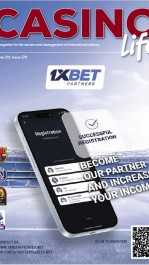Blackjack is easily one of the most famous card games in both live and online casinos, and it is famous for incorporating strategic and random factors. Implementing the right strategy about when to split the hand is one of the most important decisions a player can make in the blackjack game. It is, therefore, very important for any serious player to learn when and how to split the cards to affect the game's outcome. This article reveals the rules and strategies of splitting in the blackjack game which will help you when playing the game in an online casino or a more traditional setting.

Image: Pexels
What is Split in Blackjack?
Splitting in blackjack is when you receive two cards of the same value. When you split, you are splitting the hand into two, where each of the two hands starts with one of the two cards of the pair. You then play these two hands invisible to each other and double the initial bet. Splitting is a great option because it transforms a poor hand into two good ones.
Basic Splitting Rules
Pairs Only: You are allowed to split if the first two cards you are given are of the same value for example two eights or two Kings.
Additional Bets: In splitting you have to place another bet which is the same as the first one for the new hand that you are getting.
Play Independently: After splitting, you get to play the game again with the two new hands that you have been dealt; you draw cards and make decisions for that hand.
Resplitting: Some casinos do offer respitting, this is when if you are dealt another pair after splitting the first one, you are allowed to split again and have more hands to play.
Specific Card Splitting Rules
Although the general guidelines are applicable to any split, there are certain tactics for certain pairs that will increase your probability of success. Here’s a closer look at the best strategies for splitting:
Aces and Eights: It is Always Better to Split
Aces: Splitting Aces is advised in almost every situation. By starting with an Ace in both hands, you are placed in a favorable position to get close to 21 or a good hand. Most casinos will allow drawing only one more card per split Ace; however, the chances of getting a high-valued hand justify this decision.
Eights: Another golden rule is spilt eights. An initial dealer’s upcard of 16 is one of the poorest hands the player can draw to, often resulting in a dealer’s bust. Splitting allows you to transform a hand that is likely to lose into two hands with a greater chance of getting a total higher than the dealer’s.
Tens: Never Split
Tens: Having two cards which are tens or having any other face cards whose combined value is 20 is a good hand. Splitting tens is usually not advisable since there is a likelihood that what would have been a strong hand will become two poorer hands. Eschew the urge to fold and stick to the 20 and do not split.
Nines: Situational Splitting
Nines: Splitters are beneficial and efficient when the dealer has an up card of nine. Splitting of nines is recommended when the dealer’s up card is a 2 through 6, 8, or 9. But if the dealer is showing a 7, 10, or an Ace, it is well advised to stay on 18 since the dealer will likely go bust in the next move with a weak up-card.
Sevens: Split Against Weak Upcards of the Dealer
Sevens: Splitting sevens is generally a good strategy when the dealer shows any card from the second card through the seventh card. This is because the dealer has a high possibility of busting with these upcards, and splitting sevens could help you.
Sixes: Insurance Against the Poor Dealer Upcards
Sixes: Like with sevens, it is advised that the player should split sixes when the dealer has a card that is between 2 to 6. One six and another six will give you 12, which is a rather poor hand that is likely to bust. Here, you increase the chances of developing a better hand when splitting.
Fives and Fours: Do Not Split
Fives: Two 5s give you a total of 10, which is considered a good set of cards. It is safer to take a card and hit once more than to split because, in this way, the player has a higher chance of getting a good hand of 20 or 21.
Fours: Therefore, it is not wise to split fours. Two fours make eight, which is a decent total from which to start pulling cards. Getting a splitting four, you can get two very poor hands, and therefore, you stand a low chance of winning.
Threes and Twos: Split Against Weak Dealer Up-cards
Threes: It is advisable to split threes when the dealer’s up card is a 2 through to a 7. As with other low pairs, splitting can enable you to capitalize on the dealer’s vulnerable status.
Twos: Thus, the approach for twos is similar to that of threes. Standing on a dealer’s weak upcard to bring the cards close to you and increases the chance of getting a better hand.
Dividing in Online Casino Blackjack
All the strategies for splitting in a game of blackjack can be used in whichever type of casino you are playing in, whether it is a physical or an online one. Table games that one can play in online casinos are similar to other games and can include extra features such as tips, and practice mode, so you can master your splitting without the risk of losing money.
It is recommended that while playing, one select a good online casino with fair and clear gameplay and rules. Learn the rules of the particular online casino, as some may have different rules on splitting, for example, on whether or not one can resplit or draw after splitting Aces.
Final Notes
The strategy of splitting in blackjack is considered one of the most important and can greatly influence the result of the game. Learning when and how to break the pairs can differentiate between a great hand and a not-so-great one. Remember to split Aces and 8s, never split tens and use the following guidelines for other pairs according to the dealer’s up-card.
For those who are playing blackjack in either a brick-and-mortar or an internet casino, understanding the various splitting techniques can help increase one’s probability of winning and generally make the game more fun. When using these strategies, you can ensure that you get the best possible outcome and get the most out of each hand in blackjack.

















